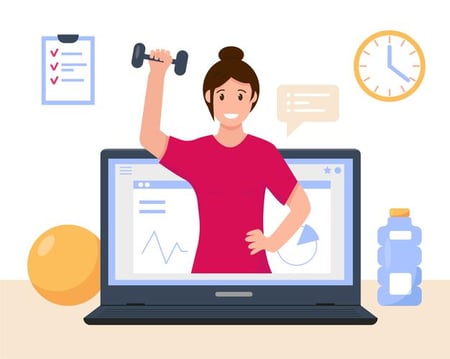Leanne Hainsby is a fantastic athlete and an even better trainer. She effortlessly motivates thousands of her students every day with innovative Peloton workouts and during the past several months it’s been a pleasure training with her. Leanne of course has no idea who I, or the other 100,000 riders who take her classes are, but through the magic of Peloton it feels like she is giving me personal training and coaching.
100,000 riders who take her classes are, but through the magic of Peloton it feels like she is giving me personal training and coaching.
Leanne and the team of Peloton trainers all follow a basic template of mixing music, motivation, and intense training that help train more than 2 million subscribers. One of the most interesting techniques that they use is something called the “Active Recovery.”
In physical training, Active Recovery is the engagement of low-intensity exercise after completing a heavy workout or athletic event. As contradictory as it may seem, the best way to recover from running a 26-mile marathon or other sports competition is to exercise at a lower intensity rather than staying in bed resting.
The old adage that "muscles grow with rest" (passive recovery) inferred that exercise and recovery were individual and distinct things that built on themselves. Most sports medicine experts today recognize this is now considered incorrect.
Active Recovery, the opposite of passive recover, better addresses how your body responds to extreme physical exertion, alleviating the stress placed on muscles, joints, connective tissues while improving muscle growth and strength.
Think about how sore you were last time you worked out hard. I personally felt extremely sore last week as I was able to get back onto the squash court and back in the gym with my personal trainer. Active recovery works because it:
- Reduces the buildup of lactic acid in the muscles, minimizing post-exercise stiffness and discomfort.
- Helps alleviate fatigue and improve moods that typically crash after a heavy sporting event.
- Promotes blood flow to the joints and muscles, counteracting inflammation.
- Maintains the heart rate at a steadier state, improving endurance and training volumes.
As an example, let’s say you just finished a 60-minute, high intensity, high impact training session with Leanne. Instead of taking a nap on the sofa, you jump in a pool and do 20 minutes of aqua jogging.
At this point, you are probably wondering what this has to do to corporate Talent Development? Well, over the past 14 months, I have heard a lot of people, especially participants of training programs, complaining bitterly about how tired and burned out they are from the intensity of the new normal of working and even more exhausted after and intense training.
Most of Advantexe’s virtual business simulation-driven learning programs are between 3 –16 hours of learning. Some of the programs are accomplished in a single day, while some are spread out over several days or weeks in a series of short connections. In all cases, participants can’t wait to take time off to recover.
Wait, where have we heard that before?
What if we applied concepts of Active Recovery to talent development learning programs? What if instead of resting, we provided low impact Active Recovery that promotes knowledge retention and reduces mental exhaustion? Active Recovery exercises could include:
- Additional simulations
- Case studies
- Role plays
- Additional content
To a certain extent, Advantexe has been doing some of this as part of an instructional design learning strategy but never under the portents of being an Active Recovery. I am definitely going to try this and will be anxious to see the results.
Stay tuned for the result in an upcoming follow-up blog!




